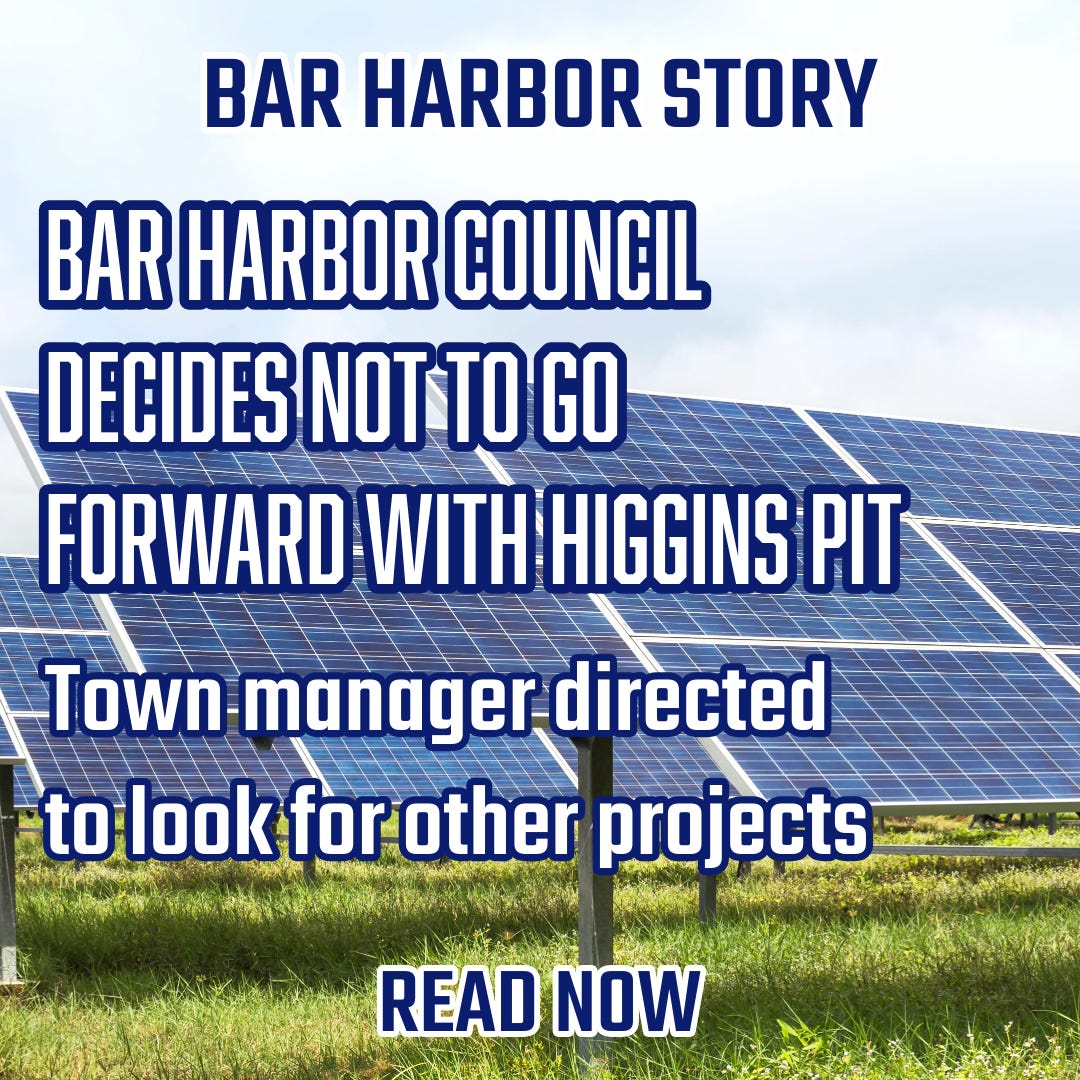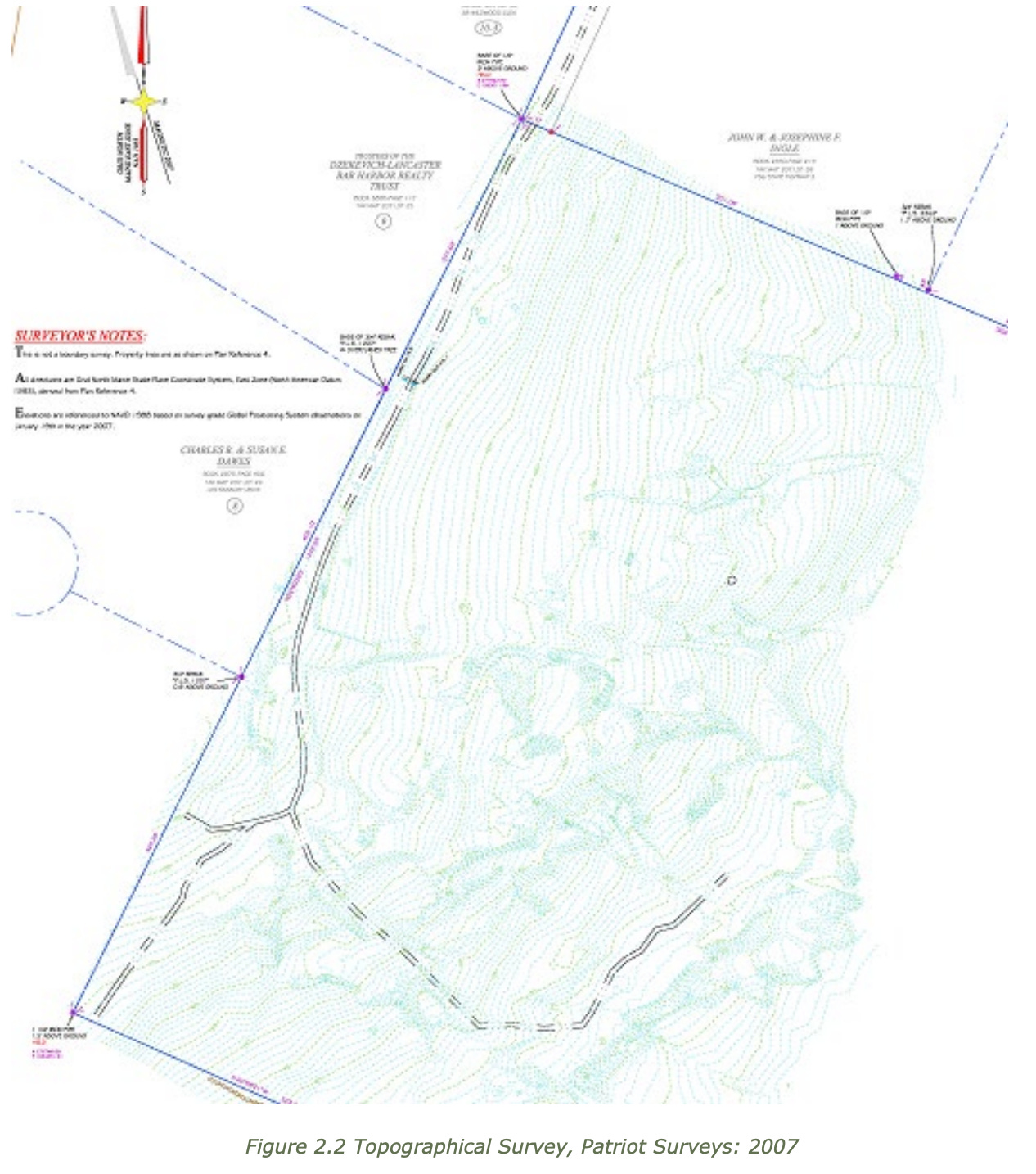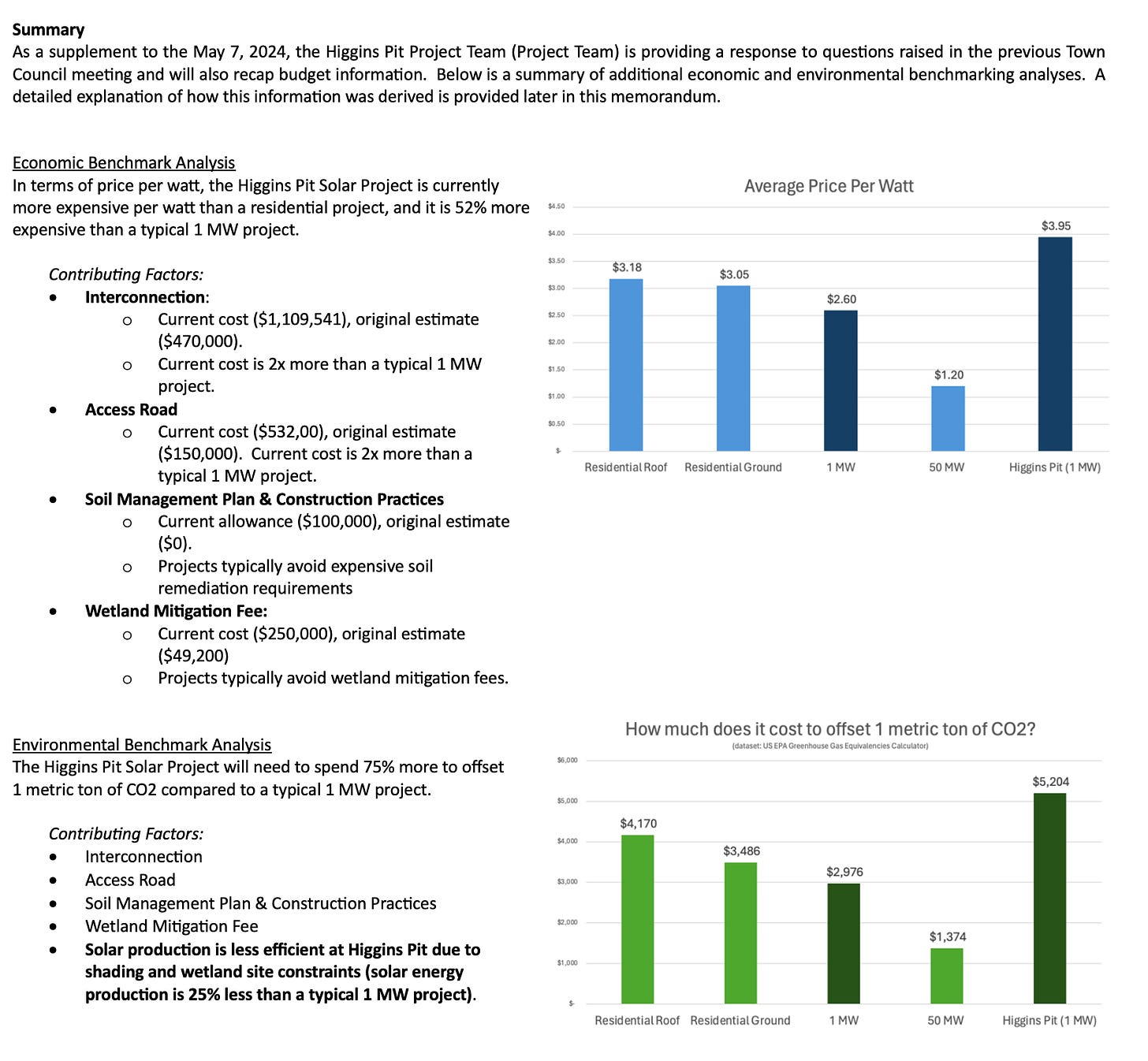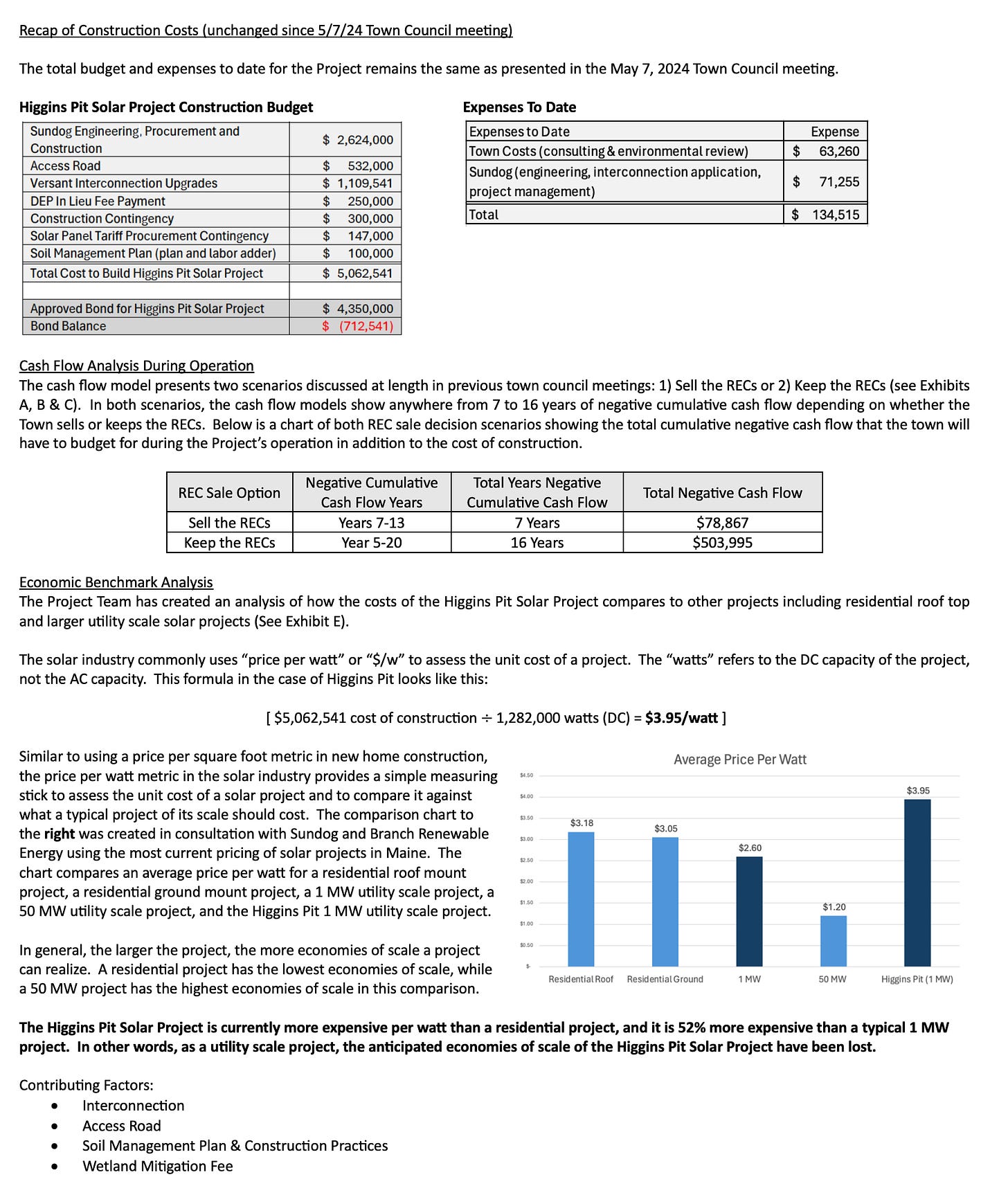Bar Harbor Council Decides Not To Go Forward With Higgins Pit
Town manager directed to look for other projects
BAR HARBOR—Two days away from signing an interconnection agreement, the Town Council decided Tuesday night to not go forward with the Higgins’ Pit solar array project and instead directed the town manager to look toward finding other projects and ways of achieving the goals of the project.
The project was meant to offset approximately 25% of the town’s carbon output by building a solar array at Higgins Pit, a town-owned property.
The parcel is 40-acres, owned by the town since 1972, and located in Salisbury Cove. A feasibility study at the site occurred in April 2021. Only a portion of the lot is developable because of the features of the site: wetlands, and brownfields. It had been a dumping area for waste from construction and sludge and hasn’t been used much since the 1970s.
The project was approved by voters in 2022, but since then, costs have risen beyond initial projections, prompting concerns for some. Because of the site of the town-owned property, for the project to go forward, wetland remediation would have to be done, a road would have to be built, and the project itself has been downsized.
Proponents say that even with those changes, the project is worth the carbon-offsets and climate-positive impacts of the project. The town has already made one payment on the bond, which was sold in August 2023. The town procured a $4.35 million bond to support the voter-approved project.
Throughout the process these last few months, multiple councilors, town climate task force members, and private citizens spoke in favor of the array. However, the timeline, need for the site, and escalating costs eventually made councilors unanimously pull back from the project on Tuesday.
Consultant Chris Byers, of Branch Renewable Energy, said that because of state regulations, he mostly does 1-megawatt projects in Maine and Bar Harbor’s project, because of the wetlands, the need for the road, and connection costs, is more expensive than average and a more expensive unit cost than even residential projects.
“It cost 75% more to offset 1 metric ton of carbon offset” than it should, Byers said. “It’s tough because we’re seeing the dollars spent are not maximizing your environmental benefit.”
The Council agreed.
“The project is going to require some level of additional property tax to buoy it up,” Town Manager James Smith said.
That increasing financial cost in a time where Bar Harbor is likely seeing a 15% tax increase if voters approve the budget in June was a deterrent despite the councilors’ desire to hep offset carbon, many councilors said.
“We’re putting something on life support that needs a spike through its heart,” Councilor Earl Brechlin said of the project. He said that whatever the town does to find different ways to offset carbon, it needs to go back to the voters. Minutolo agreed.
“I think we are a victim of unanticipated costs,” Councilor Matthew Hochman said. “I don’t know how we move forward on a project that we can’t afford from day one.”
Resident and board member of Efficiency Maine Trust, Ken Colburn, who is vice chair of the board of A Climate to Thrive, said that the process hasn’t been the height of transparency and questioned the decision.
“This project would be much less expensive if we put it down on Agamont Park or down on the playing fields. Anyone want to do that? No. This is essentially unusable brownfields. What better higher purpose does the town have for this land,” Coburn asked. He was also concerned about the projection of a 2% electricity rate increase used in the determinations. He called this an optimistic number.
“This project has not been our finest hour. There are a lot of missteps going in. The road, the soils, and the wetlands. So, maybe it’s a situation where we’d like to see it,” continue, but it’s not happening at the time, Colburn said. He worried about the transparency of the consulting process, which was led by Byers and Danny Piper of Sundog Solar, and the data and treatment of the project as if it was a typical project, when Higgins Pit, he said, is far from that.
“It’s too much investment for not enough return,” Council Chair Valerie Peacock said. It will offset 25% of the town’s carbon footprint, she said, but how will they get the 75% if this doesn’t work. “I wish that it looked better…. I think we all want to do this project.”
One resident said, “This project is just one of many we have.” She cited the Glen Mary pool, increasing library support for its operating expenses (not its expansion, which is funded by donors), and new school bond. “This is just one piece of the puzzle.”
“This is not what the voters agreed to,” Anna Durand said of the project.
In the end, Vice Chair Gary Friedmann, who had been a long supporter of the project, made a motion to ask the town manager to pursue other options that would achieve the objectives of Higgins Pit.
“It’s not easy for me to make this motion,” he said, after working on it for seven years.
He also said that return on investment (ROI) is not how the town makes its decisions.
“I’m not looking for an ROI,” Hochman said. He said that for the project, he was looking for a net-zero cost.
“We’re not looking on a return on investment. We’re looking for on the best value for a reduction of carbon,” Councilor Joe Minutolo said, and going forward that might be better done by looking at multiple projects to do that.
Multiple councilors thanked the consultants and town staff and Friedmann for working on the project. Those thanked included Smith, Finance Director Sarah Gilbert and Public Works Director Bethany Levitt. Peacock also thanked the town’s Task Force on the Climate Emergency for “its steadfast commitment to carbon reduction” and had also done a great deal of work and given guidance.
The motion was unanimous.
“Solar works in Maine. We know that. The carbon goals are achievable for the town. We know that,” Smith said and that while the project site wasn’t right, it doesn’t mean that there aren’t alternatives that the town can find and be proud of. “That doesn’t diminish the possibilities for future successes,” he said.
And now, he said, the town has information about the land, knows what can and can’t be done there, without impacting the wetlands on the site, and has opportunities through the state to clean up the site.
LINKS TO LEARN MORE:
Some Residents Push Back on Solar Farms in Trenton
Higgins Pit Solar Array Still Moving Forward
Council Packet, which includes ordinance language and potential resolves
To watch the meeting on Town Hall Streams
MORE ABOUT US:
Thanks for reading this article! All our posts are free because we want to make sure that everyone always has access to their local news, so feel free to share it if you want.
If you’d like to donate to help support us, you can, but no pressure! Just click here.








